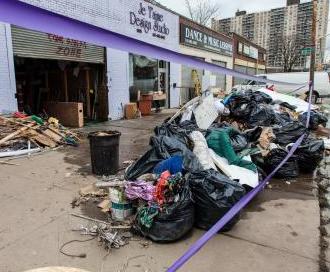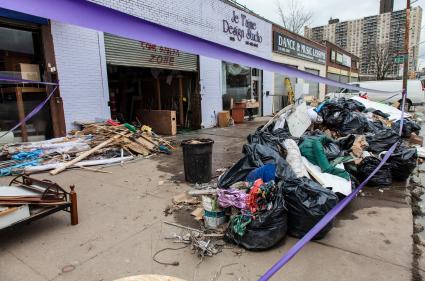 As the East Coast recovers from the aftermath of Hurricane Sandy, even businesses that suffered no physical damage are still facing a loss from being unable to reopen.
As the East Coast recovers from the aftermath of Hurricane Sandy, even businesses that suffered no physical damage are still facing a loss from being unable to reopen.
Those that have business interruption insurance will be facing much less of a financial hit as their policies cover the impact of a hurricane, according to the Insurance Information Institute.
“After a major disaster, it can take more time than many people anticipate getting a business back on track,” Loretta Worters, vice president with the I.I.I., said in a statement. “Depending on the policy, there is generally either a 48-hour or 72-hour waiting period before business interruption coverage kicks in. Too many business owners fail to think about how they would manage if a hurricane damaged their business premises so that it was temporarily unusable.”
Business Income—also known as business interruption insurance—compensates for lost income if a company has to vacate the premises due to disaster-related damage that is covered under a property insurance policy.
BI covers the profits that would have been earned, based on financial records, had the disaster not occurred. The policy also covers operating expenses, like utilities, that continue even though business activities have come to a temporary halt.
BI typically comes into play if there is physical damage to the structure, though a few companies now offer what is called “non-physical” business interruption insurance which insures for business interruption without a preceding physical loss, according to the I.I.I.
Yet not all business owners opt for covering this potential loss. A survey by the National Association of Insurance Commissioners in 2007 found that only 35 percent of small businesses, defined as firms with fewer than 100 employees, have business interruption insurance.
If a business does not have physical damage coverage for their property but could not access their location due to an Order of Civil Authority, there could still be coverage for their lost business. However the order must be the result of a peril that is covered under the business owner’s policy.
“For business interruption to be triggered under civil authority, there also has to be some physical damage in the area where the property is located and coverage typically lasts up to 30 days,” Worters said.
If the business cannot operate due to the loss of power, there could be coverage under what is typically referred to as “off-premises service interruption.” In this scenario, the business owner does not have to have damage to their facility, but the power outage must be caused by damage from a covered peril under the policy such as wind, fire, electrical breakdown, etc.
If a business has extra income coverage, the policy will reimburse the sum of money the business spends, over and above normal operating expenses, in order to avoid having to shut down during the restoration period.
Worters said those businesses that were not physically affected by the hurricane, but whose suppliers or customers were affected, will be protected if they have contingent business interruption insurance.
“Companies today are heavily dependent on raw materials from key suppliers to make the products they sell. If the supplier suffered a loss and could not deliver the product, their contingent business interruption insurance will help,” Worters said.
Flooding is not covered under standard business owners policies, unless specifically added as an endorsement and usually carries its own deductible, so it is important to check with an insurer or broker.
Flood insurance is available from the federal government’s National Flood Insurance Program and a few private insurance companies. From 2007 to 2011, the average commercial flood claim was over $75,000, according to the NFIP. Business Interruption coverage is not available under the NFIP.
Damage to vehicles from flooding, felled trees or other debris is covered under the optional comprehensive portion of an auto insurance policy.
“Business owners who have suffered losses need to contact their insurance company or agent as soon as possible to start the claims filing process,” Worters said.
The I.I.I. offers these four tips to get the claims process started:
• Read your insurance policy carefully so that you know what your responsibilities are after a loss.
• Take steps to protect the property from further damage by making temporary repairs. If immediate repairs to equipment are necessary, save the damaged parts in case the claims adjuster needs to examine them.
• Get at least two bids on the cost to repair or replace damaged property. When filing a business interruption claim, be able to show the income the business was generating both before and after the loss.
• Keep detailed records of business activity and the extra expenses of keeping the business operating in a temporary location during the interruption period. If forced to close down, include expenses that continue during the time that the business is closed, such as advertising and the cost of utilities.












